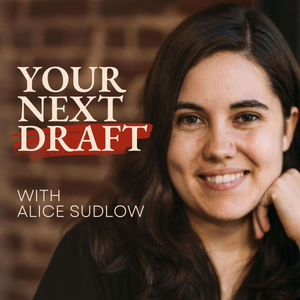
Your Next Draft
Alice Sudlow
Your Next Draft is the fiction writer's guide to developmental editing. What do you do after your first draft? How do you flesh out flat characters, fill in plot holes, and hook your readers from the first page to the last? What does editing a novel even mean? Developmental editor and book coach Alice Sudlow answers all these questions and more. Each week, she shares the editing strategies she's using with her one-on-one clients so you can put them to use in your own novel. Tune in for tips, tools, and step-by-step guides for the novel editing process.
All episodes
Best episodes
Top 10 Your Next Draft Episodes
Goodpods has curated a list of the 10 best Your Next Draft episodes, ranked by the number of listens and likes each episode have garnered from our listeners. If you are listening to Your Next Draft for the first time, there's no better place to start than with one of these standout episodes. If you are a fan of the show, vote for your favorite Your Next Draft episode by adding your comments to the episode page.
Featured in these lists
FAQ
How many episodes does Your Next Draft have?
Your Next Draft currently has 77 episodes available.
What topics does Your Next Draft cover?
The podcast is about How To, Podcasts, Books, Education and Arts.
What is the most popular episode on Your Next Draft?
The episode title 'How Do You Know When You're Done Editing Your Novel?' is the most popular.
What is the average episode length on Your Next Draft?
The average episode length on Your Next Draft is 25 minutes.
How often are episodes of Your Next Draft released?
Episodes of Your Next Draft are typically released every 7 days.
When was the first episode of Your Next Draft?
The first episode of Your Next Draft was released on Nov 20, 2022.
Show more FAQ

Show more FAQ
